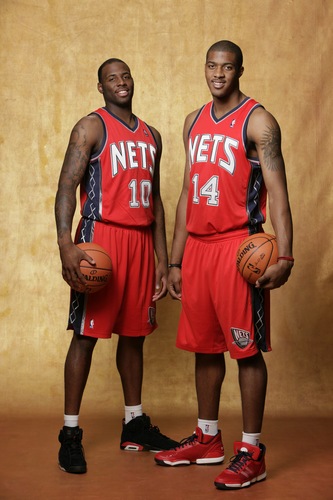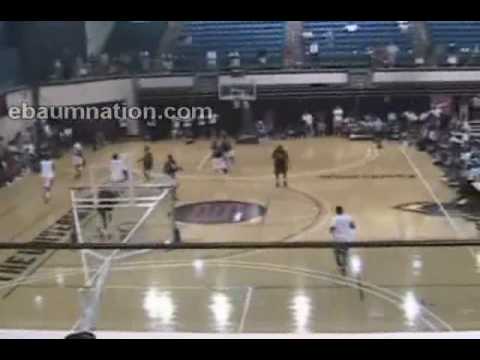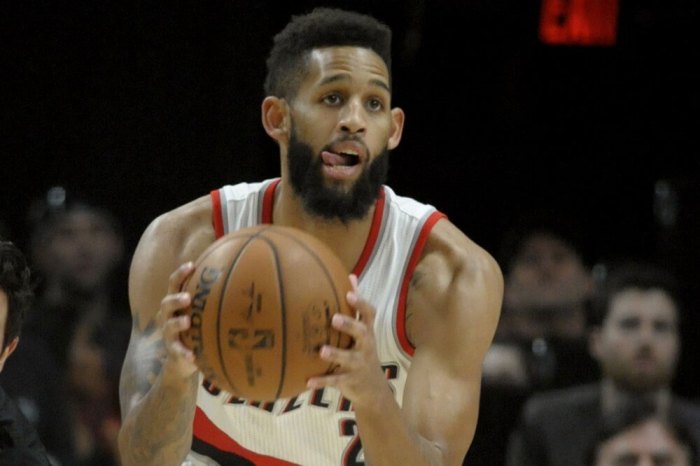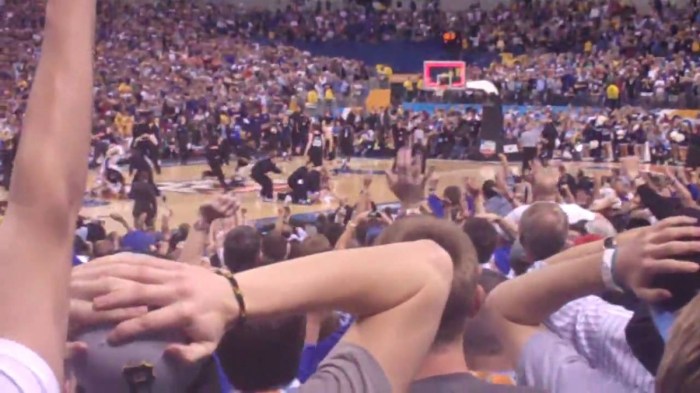
Did the Nets make the right call?
Now that the Nets are 24 games into the season, I think we’re at the point in which we can compare “what is” with “what could have been.” I’m talking, of course, about the NBA Draft, and how differently it could have gone down for every team (except Washington) in the top five picks.
As far as anyone can tell, for the third pick the Nets had four players on their radar: Evan Turner, Wesley Johnson, DeMarcus Cousins, and current Net Derrick Favors. For their late-round selection, they traded Jordan Crawford and the 31st pick (which became the rights to Tibor Pleiss) for 24th pick Damion James. This leads to two questions:
1) What if Atlanta had decided against the Crawford/31 for James swap?
Jordan Crawford, who on draft night was the darling of many Nets fans, fell into Rod Thorn’s lap with the 27th pick. While Crawford is still best known for dunking on LeBron James, he also showed off deep range at Xavier, averaging 20 points per game on 46% shooting (39% from 3). Crawford also has pretty form and a scorer’s mentality. However, that mentality hasn’t really translated to NBA success yet. He hasn’t been effective when in the game, shooting only 38% from the field in just 101 minutes (9 games) of play. Crawford entered an Atlanta Hawks team that was already deep in the backcourt, and as a result he’s been somewhat buried in the bench. With the recent Joe Johnson injury, you’d expect his play time to increase, but he’s been a DNP-CD since November 28th – before the injury.
Before his foot injury, James had also struggled early in his NBA career. While he was a leader at Texas – improving steadily each year & averaging a double-double his senior year – he’s clearly still in the midst of an adjustment period. While he’s played more than double Crawford’s minutes, James is only shooting a paltry 35% from the floor – and despite shooting 38% from 3 his senior year at Texas, has only attempted two (and made none) from beyond the arc this season. He’s shown flashes of talent, dropping 30 points in a summer league game, and despite his struggles was able to steal the starting small forward spot from Travis Outlaw (who, to be fair, is struggling more than anyone these days).
Also, while there’s no telling who the Nets might have taken with the 31st pick, a quick look at players taken in that range reveals a verifiable list of no-shows and nobodies. Only Landry Fields has been a consistent rotation player, and the Knicks shocked everyone with that pick. The Nets wouldn’t have taken him.
The Final Verdict: While Crawford does have a nice shooting touch, James brings a more diverse skillset to the floor and fills a bigger need for this team. While the foot injury sucks, once he’s healed and ready to go I’m confident that he’ll produce.
2) How would the Nets look with any of the other four players they could have gotten in the top three?
Ha! You thought this was just going to be another Favors vs. Cousins debate, didn’t you? Truth be told, the Nets could have ended up with any one of the non-Wall top 5, even though the battle was clearly between DeMarcus Cousins & Derrick Favors. If the Sixers ended up taking Favors second, the Nets would have ended up with Evan Turner. If the Nets softened on Favors at the last second, both Johnson and Cousins fit what the Nets needed, and the Nets were rumored to be highly interested in both (although the interest in Johnson didn’t fool us at NAS – both Sebastian and I agreed that it was a bad idea & seemed more like a smokescreen than anything else).
However, a little over a quarter-way through the season, here’s how the big four stack up (leader in bold):
Per Game
Evan Turner – 6.9 PTS, 4.5 (0.3-4.2) REB, 2.0 AST, 0.2 BLK, 1.3 TOV, 0.421 FG%, 0.167 3P%, 0.739 FT%, 24.9 MIN
Derrick Favors – 6.5 PTS, 5.3 (2.0-3.3) REB, 0.1 AST, 0.6 BLK, 1.0 TOV, 0.543 FG%, 0.600 FT%, 18.7 MIN
Wesley Johnson: 9.1 PTS, 3.4 (1.0-2.4) REB, 2.0 AST, 0.7 BLK, 1.6 TOV, 0.433 FG%, 0.380 3P%, 0.636 FT%, 28.8 MIN
DeMarcus Cousins – 11.0 PTS, 6.8 (2.4-4.4) REB, 1.2 AST, 0.5 BLK, 2.2 TOV, 0.396 FG%, 0.143 3P%, 0.674 FT%, 24.0 MIN
All four are rotation players, but Johnson is the only one who’s officially staked a claim as a starter throughout the season, as he’s started in 20 of 24 games. Favors is the only one who has not started.
Looking at the raw per-game numbers, they look somewhat even – Cousins & Johnson appear to have the biggest edge. Let’s look deeper. Per 36 minutes, Cousins is averaging 15 shots, 7 free throw attempts, and 3 turnovers – an awful lot of usage for a rookie. Truthfully, he’s leading all true rookies in usage rate, which is how he’s able to put up higher scoring numbers despite shooting poorly from the field. Johnson is the opposite – his numbers look higher solely because of his increased playing time. He actually has one of the lowest usage rates among all qualified rookies – 22nd out of the 26. Evan Turner, on the other hand, has just been awful.
As a result, while the raw figures produced by Cousins & Johnson look more impressive, when digging a little deeper you see it’s just a façade. As mentioned before on this site (and many others), the best way to look at individual efficiency is to look at more advanced analytics, which is what I’ll use here. For any explanations, refer to the awesome glossary over at Basketball-Reference. Again, leaders in bold.
Advanced
Evan Turner – 0.478 TS%, 0.428 eFG%, 1.6 ORB%, 19.3 DRB%, 11.9 AST%, 0.7 BLK%, 15.4 TOV%, 93 ORtg, 15.7 USG%, 0.4 WS, 0.035 WS/48, 8.8 PER
Derrick Favors – 0.571 TS%, 0.543 eFG%, 12.3 ORB%, 21.4 DRB%, 1.2 AST%, 2.5 BLK%, 14.3 TOV%, 109 ORtg, 16.9% USG, 1.0 WS, 0.107 WS/48, 13.9 PER
Wesley Johnson – 0.525 TS%, 0.510 eFG%, 3.6 ORB%, 9.7 DRB%, 10.3 AST%, 1.8 BLK%, 15.4 TOV%, 103 ORtg, 14.9 USG%, 0.4 WS, 0.026 WS/48, 9.3 PER
DeMarcus Cousins – 0.457 TS%, 0.399 eFG%, 10.6 ORB%, 22.3 DRB%, 8.5 AST%, 1.6 BLK%, 15.4 TOV%, 92 ORtg, 26.1 USG%, 0.0 WS, 0.002 WS/48, 11.8 PER
TS% – True Shooting Percentage
eFG% – Effective FG%
ORB% – Offensive Rebound Rate
DRB% – Defensive Rebound Rate
AST% – Assist Rate
BLK% – Block Rate
TOV% – Turnover Rate
ORtg – Offensive Rating (Points produced per 100 possessions) (league average – 106.7)
USG% – Usage Rate (average NBA player – 20.0)
WS – Win Shares
WS/48 – Win Shares per 48 minutes (average NBA player = 0.100)
PER – John Hollinger’s Player Efficiency Rating (average NBA player – 15.0)
Amazing what a more thorough look can uncover, huh? Despite his lack of playing time, Favors statistically outranks every other player the Nets could have taken in the top 5, even though he’s by far the youngest of the four (Wesley Johnson is the old man at 23). He’s never been accused of being a great passer – and he’ll need to work on that – but he finishes strong at the hoop, is a tenacious rebounder, blocks a decent amount of shots for a rookie, and has overall had a much bigger impact in his limited minutes than the other rookies. Favors is also doing all of this while enduring bumps in the road; he’s the youngest player in the NBA and has had his name stirring the “Carmelo Anthony to the Nets” pot since draft night.
The Final Verdict: When David Thorpe did a re-draft earlier this week, he called Favors the no-doubt #2 selection in this draft, and after doing the research I 100% agree. Between Evan Turner’s shocking struggles (seriously, thank goodness the Sixers took him second), Wesley Johnson’s lack of upside, and DeMarcus Cousins’ inefficiency & need to dominate possessions (not to mention headbutting with management), I’m very happy with our selection. Favors has both skyscraping upside and has effectively executed his role in limited time. Kris Humphries has been better than advertised in his starting role, but as Favors continues to develop, I wouldn’t be shocked to see him starting very soon.

















